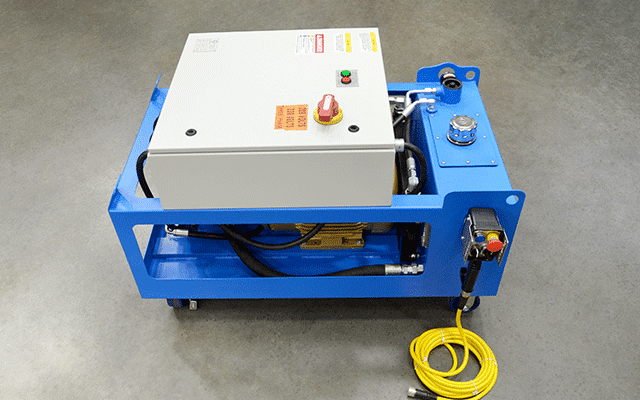Godrej Agrovet eyes oil palm expansion
Diversified agribusiness participant Godrej Agrovet Ltd (GAVL) is eyeing big growth in oil palm following the Centre’s new plan announcement. The company proposes to bring up to a person lakh hectares (lh) less than oil palm in the up coming five to six a long time. At this time, Godrej will work with farmers in Andhra Pradesh, Telangana and Tamil Nadu, in which it has about sixty five,000 hectares less than oil palm.
“We can bring close to a person lh less than oil palm over the up coming five a long time, delivered the new plan is executed lock, stock and barrel,” said Balram Singh Yadav, Managing Director, Godrej Agrovet.
On Wednesday, the Centre approved ₹11,040 crore Nationwide Mission on Edible Oils – Oil Palm to cut down imports by marketing the crop in six.5 lh and raising the crude palm oil (CPO) output to 11.twenty lakh tonnes by 2025-26. The plan delivers selling price assurance to the farmers as a result of viability gap funding, other than incentivsing the inputs and planting materials.
‘Transparent formula’
Yadav said the new plan has brought some certainty in conditions of pricing and the system is clear. “The Centre has completed its task. Now the States should also choose it up to aid progress,” he extra.
There’s major queue of farmers seeking to change to oil palm, looking at the returns it has produced this yr on improve in oil costs, Yadav extra.
Godrej Agrovet will also be growing its oil milling ability, but it is far too early to quantify the investments, he said. The company has three processing mills in Andhra Pradesh, and a person every in Tamil Nadu, Goa and Mizoram with a mixed processing ability of three,000 tonnes for each hour. “Our ability utilisation is about 80 for each cent throughout the four-thirty day period year,” Yadav said including that company has plant ability for the up coming three a long time. The company developed close to 1.1 lakh tonnes of crude palm oil final yr, which it bought to refiners.
The company is also eyeing for lands in Mizoram and the Andamans. “In a year’s time we would have surveyed more States. With these sort of benefits, lot of States will soar into the bandwagon. I have a powerful watch that Assam and Meghalaya will get this up quite strongly,” Yadav said.
Andaman is the best location for oil palm for the reason that it rains a lot, soils are quite very good and temperature is quite very similar to Indonesia and Malaysia, Yadav extra.
Carbon Constructive Business enterprise
On the ecological implications, Yadav said that in India oil palm is a carbon constructive business, as opposed to in Indonesia and Malaysia, in which forests are cleared killing flora and fauna to grow oil palm trees. “In India, we are converting paddy lands into oil palm. Crop diversification is also going on. Soils are depleted for the reason that of monoculture. It is carbon constructive and very good for the setting. Can you think about that a person hectare of oil palm now has a hundred and fifty trees as an alternative of none?” he said.
Drinking water intense?
Oil palm is a drinking water intense crop, but drip is transforming the match, Yadav said. “There’s eye-catching subsidy for drip irrigation and about 80-ninety for each cent of our plantations have drip irrigation and the drinking water utilisation is quite considered. In comparison, oil palm is not as drinking water intense as paddy and sugarcane,” he said.
Though official estimates reveal that oil palm is grown in about three.5 lh, the acutal spot is close to 2.5 lh as there has been some uprooting by farmers, he said. Palm oil production in the nation is believed at four lakh tonnes.
In India, Yadav said, production charges are larger due to lower efficiency and oil recovery generally due to temperature and rainfall conditions, when when compared with Indonesia and Malaysia.
The normal yields of new fruit bunches for a seven-yr plantation in India is sixteen-seventeen tonnes for each hectare, whilst it is 24-twenty five tonnes in Malaysia and Indonesia. In India, the oil recovery rate is seventeen.5 for each cent, whilst in Malaysia and Indonesia it is 19-19.5 for each cent.
The larger recovery in Malaysia and Indonesia is for the reason that the plantations are over ten a long time and most of the plantations are owned by the firms and not less than deal farming. “As a outcome, the firms are equipped to adhere to demanding management tactics, which is challenging for our farmers to adhere to,” he said.
Oil palm is grown less than deal farming in India less than a tri-partite arrangement among the farmer, the miller and the State. The Oil Palm Act mandates a command spot technique enabling farmers from a distinct spot to supply to a specified miller like in the case of sugar industry, prior to decontrol.







